|
|
|
Sort Order |
|
|
|
Items / Page
|
|
|
|
|
|
|
| Srl | Item |
| 1 |
ID:
090390
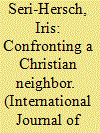

|
|
|
|
|
| Publication |
2009.
|
| Summary/Abstract |
This is how Isma?il bin ?Abd al-Qadir, a Mahdist chronicler of late 19th-century Sudan, gave a broad Islamic significance to the defeat of Ethiopian armies by Mahdist forces at al-Qallabat in March 1889. Culminating in the death of Emperor Yohannes IV, the four-year confrontation between Mahdist Sudan and Christian Ethiopia (1885-89) had repercussions that transcended the local setting, reaching far into the intertwined history of Sudan, Ethiopia, and European imperialism in the Nile Valley and Red Sea regions.
|
|
|
|
|
|
|
|
|
|
|
|
|
|
|
|
| 2 |
ID:
090385
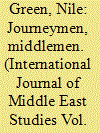

|
|
|
|
|
| Publication |
2009.
|
| Summary/Abstract |
Within a few years of 1820, Muslim-owned printing presses were established under state sponsorship in Iran, Egypt, and India, marking the true beginning of printing in the Islamic world. Printing projects had been initiated before this period-most famously by Ibrahim Müteferrika (1674-1745) in Istanbul-but these were isolated and unsustained ventures. None gathered the joint momentum of state support and technological transfer to compare with what emerged simultaneously in Tabriz, Cairo, and Lucknow. In attempting to understand the common processes behind this "triplet" birth of Muslim printing, this article reconstructs the small circle of individuals whose at times discordant projects collided in creating a sustainable Muslim print tradition in several distinct centers around 1820.
|
|
|
|
|
|
|
|
|
|
|
|
|
|
|
|
| 3 |
ID:
090394
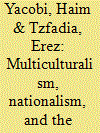

|
|
|
|
|
| Publication |
2009.
|
| Summary/Abstract |
One of the central issues in the study of urban politics today is the fact that many cities have become multicultural arenas. The liberal viewpoint stresses the potential of the city-unlike other spaces-to offer many and equal opportunities for all residents regardless of religion, gender, or ethnic affiliation, but the critical body of knowledge highlights the ways in which the city, although apparently released from the shackles of nation- and state-building projects, continues to reproduce existing power structures and is a stratifying place, maintaining patterns of discrimination, exclusion, and segregation. This tension between the city as an enabling space versus the city as a reinforcer of socionational stratification is at the center of this article.
|
|
|
|
|
|
|
|
|
|
|
|
|
|
|
|
| 4 |
ID:
090388
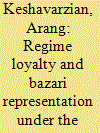

|
|
|
|
|
| Publication |
2009.
|
| Summary/Abstract |
The prevailing perception within the academy, policy circles, and the media inside and outside Iran has been that the members of bazaars are a unified social class engaged in a symbiotic relationship with the political elite of the Islamic republic and the conservative faction in particular. This approach is largely built on the perspective that there is a historic predilection for b?z?r?s and clerics to cooperate ("mosque-bazaar alliance"), and thus ideological compatibility and familial ties between the clergy and b?z?r?s have continued and developed into an alliance under the current regime headed by segments of the clergy. For instance, one of the leading experts on 20th-century Iran, Nikki Keddie, comments that, despite Mohammad Khatami's reformist agenda, "the ruling elite, who represent an alliance between the commercial bazaar bourgeoisie and conservative clerics, resist giving up their economic privileges as they do their political ones."
|
|
|
|
|
|
|
|
|
|
|
|
|
|
|
|
| 5 |
ID:
090393
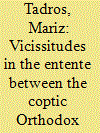

|
|
|
|
|
| Publication |
2009.
|
| Summary/Abstract |
Although some contemporary Egyptian studies have broached aspects of the relationship between the Coptic Orthodox Church and the regime, few have examined developments in the political rapport between the two in the last decade. Important studies have touched on the relationship between the state and church during Nasser's regime, the Sadat years, and the early years of the Mubarak regime, up to the first half of the 1990s. However, there is a paucity of literature on the relationship between the Coptic church and the Egyptian state in the past ten years, a lacuna that this study addresses.
|
|
|
|
|
|
|
|
|
|
|
|
|
|
|
|
|
|
|
|
|